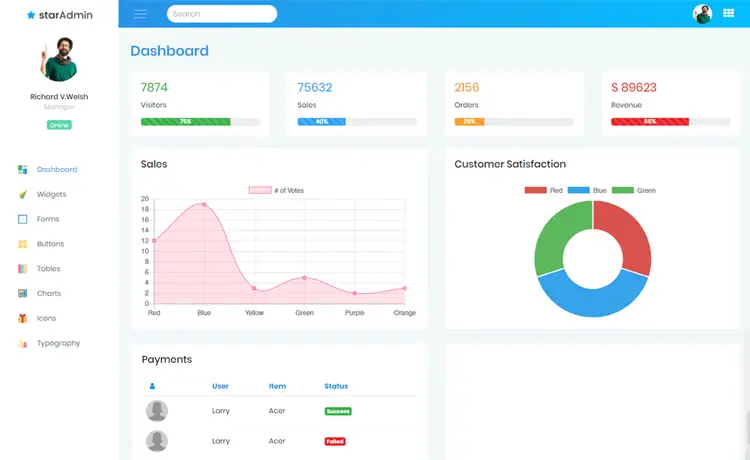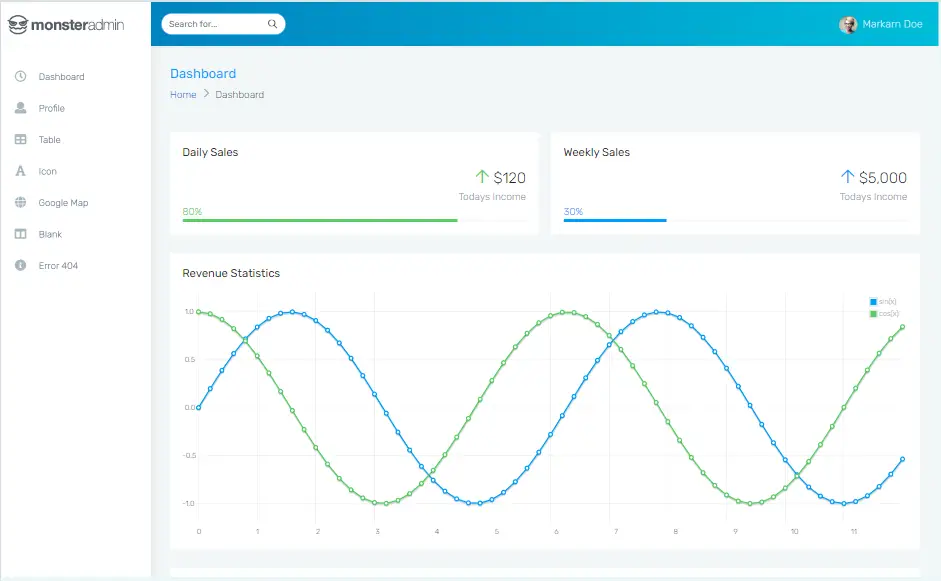Boosting Web Performance with MapStaticAsset in ASP.NET Core
By Tan Lee Published on Jan 09, 2025 650
Challenges in static asset delivery include excessive HTTP requests, large file sizes, and outdated cached files.
The article introduces MapStaticAssets, a new middleware in ASP.NET Core designed to improve static asset delivery.
Unlike the traditional UseStaticFiles, MapStaticAssets offers several advantages:
- Build-Time Compression: Compresses assets during development and publishing, reducing file sizes and improving load times.
- Content-Based ETags: Uses SHA-256 hashes for ETags, ensuring efficient caching and preventing unnecessary redownloads.
- Fingerprinting: Uniquely identifies assets to prevent browsers from using outdated versions after updates.
By addressing these limitations, MapStaticAssets enhances performance, efficiency, and user experience.
How to Implement MapStaticAssets in ASP.NET Core
To implement MapStaticAssets in ASP.NET Core, first ensure you have an existing project or create a new one.
In the Program.cs file, add MapStaticAssets to the app's request pipeline.
This middleware:
- Sets ETag and Last-Modified headers.
- Configures caching headers.
- Utilizes caching middleware.
- Serves compressed static assets when possible.
var builder = WebApplication.CreateBuilder(args);
// Additional services and configurations...
if (!builder.Environment.IsDevelopment())
{
// Configure production-related settings...
}
app.UseHttpsRedirection();
app.UseStaticFiles(); // Enable static file serving
app.UseAuthorization();
// Additional middleware configurations...
app.MapStaticAssets(); // Configure MapStaticAssets
app.Run();In the code above:
app.UseStaticFiles()enables serving static files from the wwwroot folder, allowing you to reference them in HTML or other resources.app.MapStaticAssets()configures MapStaticAssets to optimize asset delivery by setting ETag and Last-Modified headers, applying caching, and serving compressed assets.
For example, to display an image named MyImage.jpg from the wwwroot/images folder, you can use the following markup:
<img src="~/images/myimage.jpg" class="img" alt="image" />
Compatibility with UI Frameworks:
- Blazor: MapStaticAssets works seamlessly with both server-side and client-side (WebAssembly) Blazor applications, optimizing static asset delivery.
- Razor Pages: It enhances asset delivery for Razor Pages, improving page load speed.
- MVC: Whether building APIs or traditional web applications, MapStaticAssets integrates well with the MVC pattern for efficient static asset serving.
Integrating MapStaticAssets into ASP.NET Core projects provides several advantages:
- Faster Page Loads: Compressed assets and efficient caching result in quicker initial load times, enhancing user experience.
- Bandwidth Savings: Smaller files reduce data transfer, benefiting both users and server costs.
- SEO Improvement: Faster-loading pages boost search engine rankings.
- User Satisfaction: Optimized assets help prevent slow-loading pages, keeping users engaged and improving retention.
- Implement security headers for an ASP.NET Core
- How to add security headers to an ASP.NET Core Application
- How to Initialize TagHelpers in ASP.NET Core with Shared Data
- Boost Your ASP.NET Core Website Performance with .NET Profiler
- The name 'Session' does not exist in the current context
- Implementing Two-Factor Authentication with Google Authenticator in ASP.NET Core
- How to securely reverse-proxy ASP.NET Core
- How to Retrieve Client IP in ASP.NET Core Behind a Reverse Proxy





